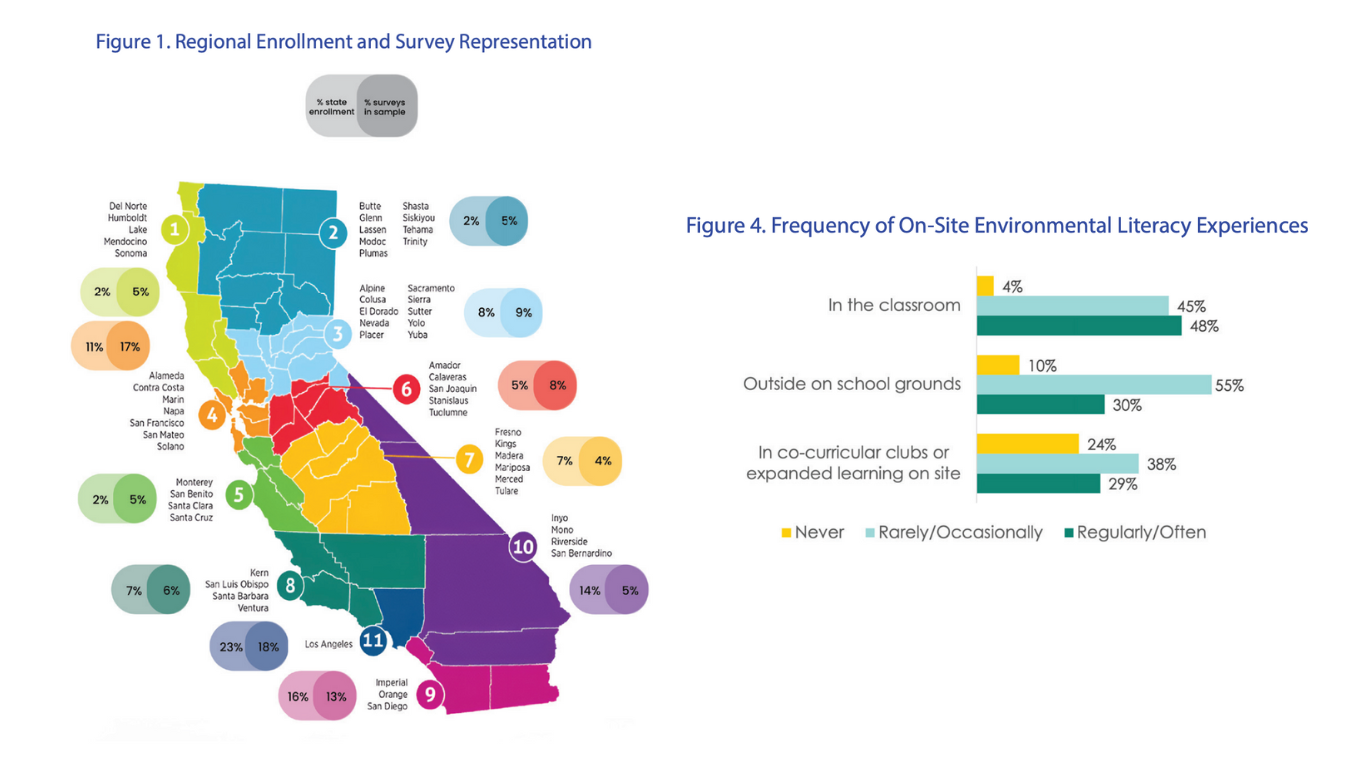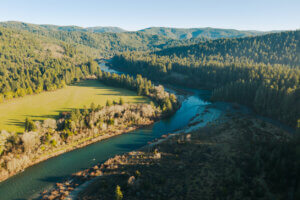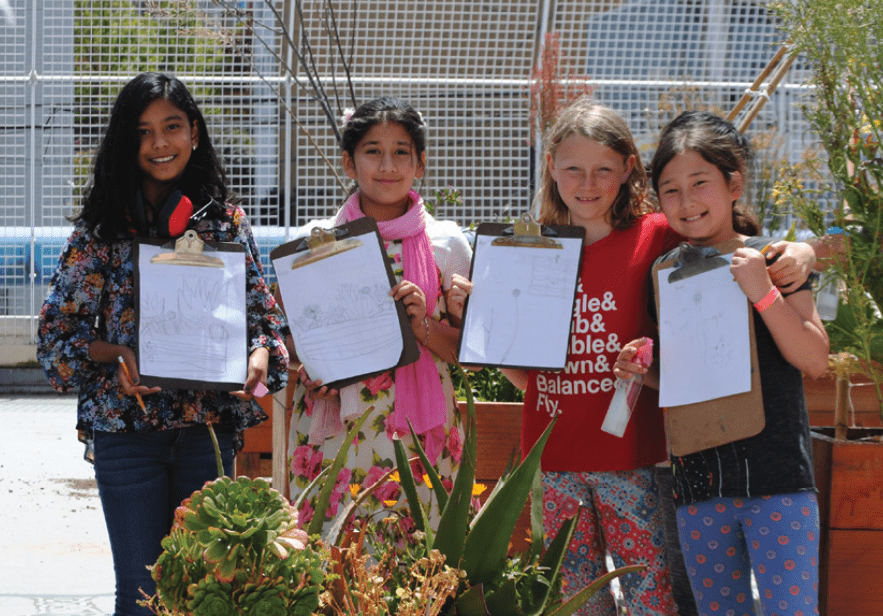The recently released report, Peaks and Valleys: A landscape study of environmental literacy implementation in and out of California’s TK–12 classrooms, offers an in-depth look at the state of environmental education in California. This yearlong study, conducted by the California Environmental Literacy Initiative (CAELI), Ten Strands, and The Lawrence Hall of Science, examines how environmental literacy is being integrated into classrooms and outdoor learning environments across the state.
To ensure broad representation, CAELI leveraged its extensive statewide network to recruit participants from all fifty-eight counties in California. This comprehensive approach provided a wide-ranging view of how environmental education is being implemented in diverse settings—from urban to rural and from coastal to inland communities.
Key Findings: A Mixed Landscape
The Peaks and Valleys report uncovers both encouraging progress and challenges in California’s environmental literacy efforts. A key finding is the strong desire among educators and administrators to increase the presence of environmental education in their schools. Over eighty percent of those surveyed expressed a keen interest in expanding environmental literacy in their districts, classrooms, and outdoor spaces. This widespread enthusiasm highlights the recognition of environmental education as essential for preparing students to make informed decisions that contribute to sustainable and equitable communities.
However, this enthusiasm is not without its challenges. Many educators report a lack of adequate curricular materials and professional development opportunities, which hinders their ability to effectively integrate environmental literacy into their teaching. This gap between the desire for environmental education and the resources available underscores the need for targeted investments in educational support systems.
Inclusivity also emerged as a critical concern in the study. There is a growing demand for learning materials that address the intersections of race, culture, and environmental literacy. The report calls for stronger partnerships with Native communities to incorporate traditional Indigenous ecological knowledge into the curriculum. These initiatives are seen as vital for creating a more inclusive and relevant environmental education experience for all students.
Building a Sustainable Future
The findings of the Peaks and Valleys report emphasize that environmental literacy is about more than just understanding ecological concepts. It’s about equipping students with the tools they need to actively participate in creating sustainable and just communities. This requires not only enthusiasm and commitment from educators but also substantial support in the form of resources, training, and inclusive educational practices.
Karen Cowe, CEO of Ten Strands, emphasized the importance of the study’s findings: “The new California Environmental Literacy Landscape Analysis report reveals encouraging progress in promoting environmental literacy in California, but it also highlights the need for further support to ensure all students have access to environment-based experiences.”
Moving Forward: A Collective Responsibility
The Peaks and Valleys report is a call to action for educators, policymakers, and community leaders across California. While the state has made significant strides in promoting environmental literacy, the study makes it clear that more work is needed. Addressing the gaps identified in the report—particularly in areas like curricular support, professional development, and inclusivity—will be crucial for ensuring that every student in California can benefit from a robust environmental education.
As California continues to lead the nation in environmental initiatives, the insights from this report provide a roadmap for strengthening the state’s commitment to environmental literacy. By fostering collaboration among educators, communities, and policymakers, California can ensure that environmental education remains a priority, preparing students to become informed and responsible stewards of the planet.








